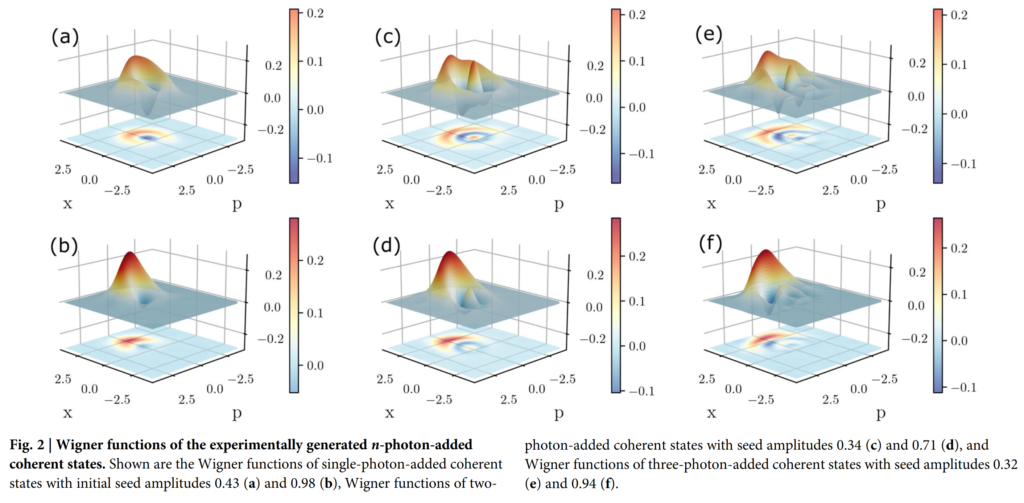Adding Photons Without the Noise
— Our team has made a significant breakthrough by experimentally preparing multiphoton-added coherent states of light, a key development in optical quantum state engineering. The findings, published in npj Quantum Information, highlight demonstrating the addition of multiple photons—specifically one, two, and three photons—to input coherent light states. The photon-added states exhibit highly nonclassical properties and could pave the way for advanced quantum technologies.
The ability to add photons to coherent states is essential for creating advanced quantum photonic devices. Using a sophisticated setup involving picosecond optical parametric amplification and photon-number-resolving detection, we were able to manipulate light at the quantum level (Fig. 1). An ultra-stable time-domain homodyne detector was employed to completely characterize the photon-added states, revealing the unique quantum features through Wigner function negativity, which directly indicates the nonclassicality of the light states (Fig. 2).

We not only have demonstrated the ability to conditionally add multiple photons but also broadened the scope for more complex quantum state engineering through combinations of photon addition and subtraction. The research also has implications for noiseless quantum amplification, a process that enables the enhancement of light without introducing the typical noise associated with classical amplification. This property could significantly improve quantum communication and computing systems, where maintaining the integrity of quantum states is crucial.

These advances represent a major step forward in quantum optics, with potential applications in quantum computing, secure communication, and high-precision measurement technologies. Manipulating the higher number of photons coherently opens the door for more sophisticated quantum-state engineering, helping bring futuristic quantum technologies closer to reality.


